In Short
The Sergeant Baker (Aulopus purpurissatus) is a vibrant and intriguing fish species endemic to the temperate waters of Australia. Renowned for its striking coloration, unique body shape, and fascinating behavior, this species is a favorite sight among divers exploring coastal reefs and rocky outcrops. Its common name pays homage to Sergeant William Baker, an early settler and keen fisherman, reflecting its historical significance and enduring appeal.
Contents
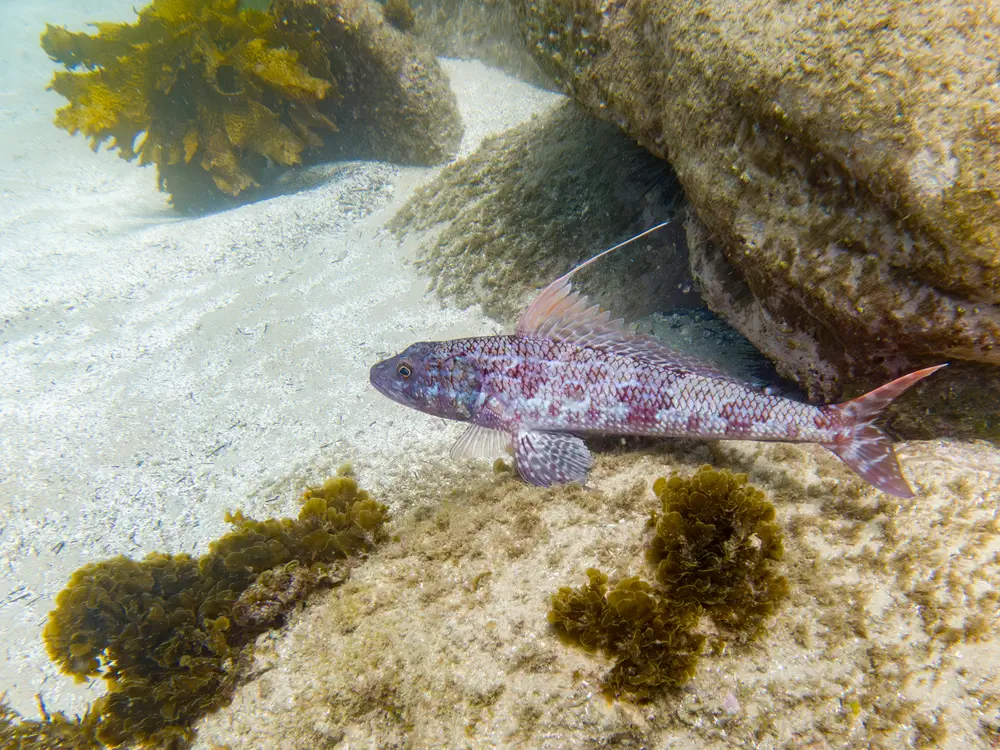
Want to identify that fish? Gerald R. Allen’s field guide has the largest species coverage of them all, and is very well illustrated.
Identification
The Sergeant Baker is a striking and distinctive fish that is easily recognized by its elongated, tapering body, large mouth, and vivid coloration. Its deep reddish to purplish back and sides contrast with a pearly to yellowish-white underside, and its fins are adorned with yellow, crimson, orange, and brown blotches. The eyes are a vibrant orange to crimson, adding to its vivid appearance.
Adult males are particularly notable for their first dorsal fin, which features greatly elongated rays that extend almost to the adipose fin, a feature not found in females. These threadlike extensions make males readily distinguishable. The body is moderately elongated, with fine, sharp, and curved teeth arranged in multiple rows on both jaws, suitable for their ambush predatory behavior.
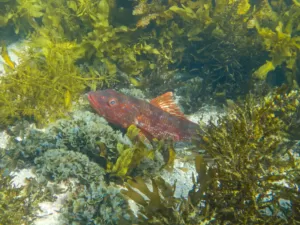
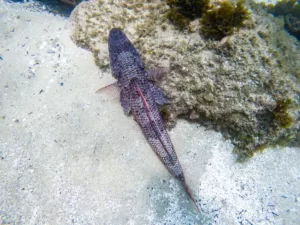
A characteristic behavior of the Sergeant Baker is its habit of perching on the sea floor, either on rocky outcrops or sandy substrates, with its head held high, blending seamlessly into its surroundings. This posture, along with its ability to change color to suit its habitat, often allows it to go unnoticed by predators and divers alike.
This species is thought to derive its name from Sergeant William Baker, an orderly sergeant to Governor Phillip, who was one of the early settlers in Australia and a reputed fishing enthusiast. The fish’s permanent, slightly upturned “smile” has also earned its order the nickname “Grinners.”
Distribution and Conservation
The Sergeant Baker is endemic to the temperate waters of Australia, where it inhabits an extensive range spanning from Double Island Point in Queensland, along the southern coastline, and up to Shark Bay in Western Australia, including Tasmania. This species thrives in diverse habitats such as rocky and coral reefs, bays, inlets, and coastal waters, often at depths ranging from shallow inshore areas to around 250 meters on the upper continental slope. Its presence is particularly noted near soft-bottom habitats and among sea grasses, where its adaptive coloration and perching behavior allow it to blend seamlessly into its environment. It is commonly spotted by divers in areas such as Sydney, where it often rests on sand or rocks with its head raised.
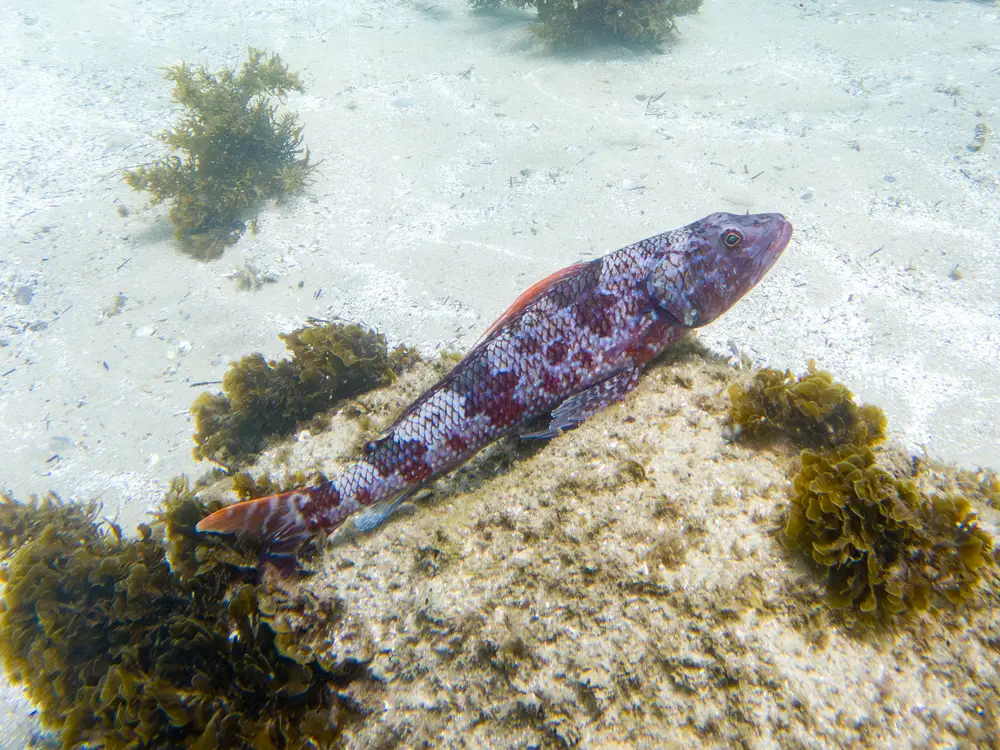
While the Sergeant Baker is not currently classified as a species of conservation concern, its limited geographical distribution, endemic status, and specific habitat preferences make it susceptible to localized threats. Habitat degradation from coastal development, pollution, and overfishing of associated ecosystems could pose risks to its populations over time. As a species admired by divers and occasionally caught by recreational fishers, promoting responsible fishing practices and marine habitat preservation is crucial to maintaining the ecological balance of its environment and ensuring its continued presence in Australian waters.
Behaviour and Character
The Sergeant Baker is a fascinating ambush predator known for its inquisitive and strikingly composed demeanor. Divers often encounter this species perched on the seabed, either on rocks or sandy substrates, with its head raised high—a stance that exudes both confidence and curiosity. Its coloration, ranging from reddish to purplish tones with a yellowish-white underside, allows it to blend seamlessly into its surroundings, making it both a master of camouflage and a keen observer of its environment. Despite its predator status, it does not exhibit aggressive tendencies toward divers, instead often displaying a calm and watchful nature, which has made it a favorite among underwater photographers and marine enthusiasts.
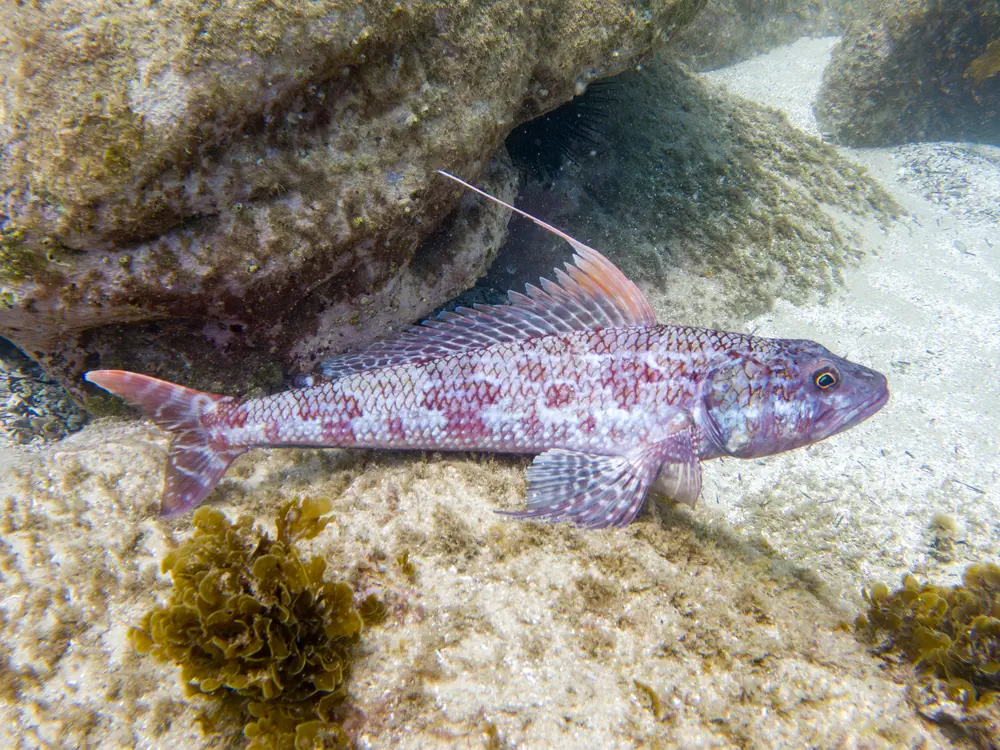
While the Sergeant Baker poses no significant threat to humans, care should be taken if handling one, as its mouth is equipped with small, sharp, and curved teeth designed for gripping prey. These teeth, though not harmful unless provoked, can cause minor injuries if accidentally mishandled, especially when removing fishing hooks. Observers should respect the fish’s space to avoid causing unnecessary stress and appreciate it from a distance, taking note of its unique features and intriguing behavior. Divers and snorkelers are encouraged to enjoy its presence responsibly, ensuring minimal disturbance to its natural habitat.
From Reefranger
I have come across a fait few Sergeant Bakers at Shelly Beach, where they can often be seen resting on rocks lurking for prey. While they supposedly grow to about a 60cm, I have only seen species smaller than that so far. All of them have been males, hoping to be able to add photos of a female soon.
Distribution
Temperate waters from the central Western Australian coast to southern Queensland.
Facts
Max Size: 68 cm
Depth: 5-250 m
Lifespan: Up to 20 years
Risk and Safety
No risk.
Conservation
IUCN Status: Least Concern
Population: Trend Unknown
